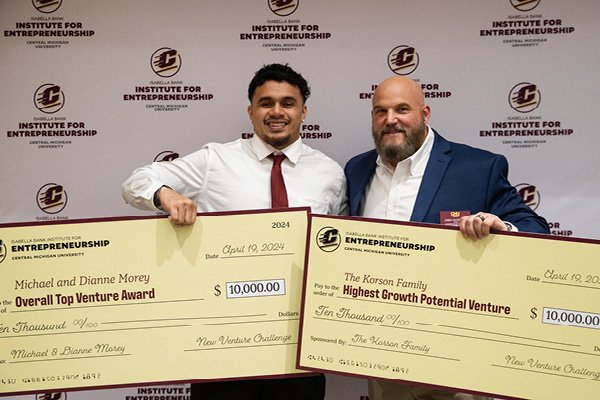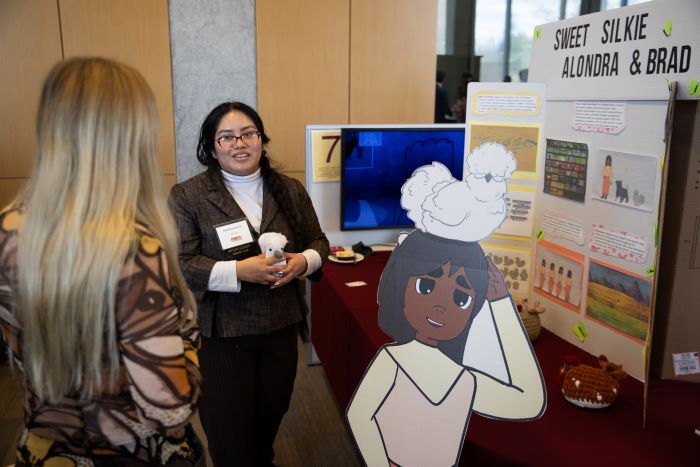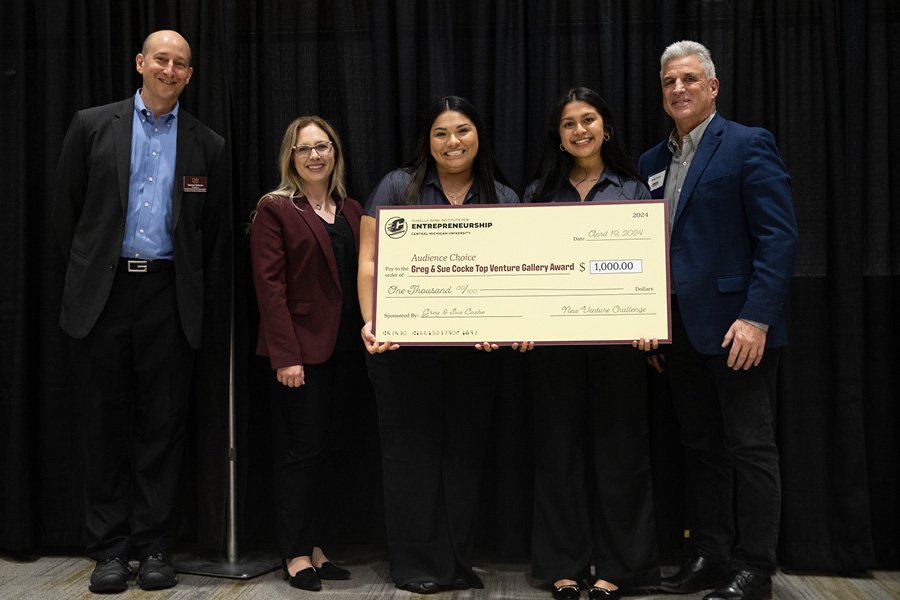
Start up
Passion. Potential. Pitches. Don't miss any of the 2025 New Venture Challenge excitement.
Tune in Friday, April 11 at 1 p.m. for great ideas and fierce competition. Then, join the judges, mentors, spectators and teams as they see who is going home with thousands of dollars in venture financing. The awards broadcast begins at 6:30 p.m. and one team will walk away as the overall best venture.
Central Michigan University’s College of Business Administration is the home of the Isabella Bank Institute for Entrepreneurship and the first Department of Entrepreneurship in the state of Michigan. We are a student-centric hub where experiential, curricular, and external entrepreneurial opportunities intersect.
Our mission is to maximize student success by fostering a campus-wide entrepreneurial mindset that promotes inter-disciplinary collaboration and the creation of new ventures.
We aim to create innovative programming, boost cross-campus and ecosystem collaboration and provide a comprehensive mentoring program.
Our institute provides extracurricular opportunities and is open to all undergraduate and graduate CMU students.
Are you interested in becoming an entrepreneur?
Every journey is unique. Explore the opportunities that interest you.
Can glowing protein used by shrimp to evade predators help cure diseases like cancer? A Central Michigan University neuroscientist hopes his lab can provide an answer.
The cure wouldn’t come from the shrimp themselves, said Eric Petersen, a research faculty with the College of Medicine. Created in a lab, the protein would play a critical role in a tiny signaling machine that could help other researchers find cures.
“We are able to use the genes from these shrimp responsible for creating the component that produces light in the form of bioluminescence,” Petersen said. “We work to modify these components to be a useful tool for studying how cells and organs function.”
The shrimp, which lives in the deep waters of the ocean, uses the protein to protect itself. When predators try to eat them, the shrimp burp it out in a blinding, bioluminescent cloud. It creates an escape route the same way that ink helps octopi evade their predators.
Petersen hopes to harness the bioluminescent powers of the protein to create tiny little signals inside cells that play a crucial part of the process.
The tools have two stages, he said. The first involves a protein that detects when cells are communicating in a way that suggests that a triggering activity is taking place. Using cancer as an example, that would be rapidly multiplying cells suggesting tumor growth.
The protein trips a switch in the first part of the machine, bringing together two pieces of bioluminescent shrimp spit. The effect is like closing an electrical circuit, and the spit begins to glow.
That signals to a genetic switch to take a specific action programmed into them, he said. That could be to send a signal that tells researchers that a tumor is growing. It could also flip a kill switch that shuts down the tumor’s growth.
Diabetes, inflammation and neurodevelopment disorders are other potential applications for Petersen’s signaling biomachine.
In fact, it could find use in the labs of other CMU researchers.
That’s not the only CMU connection. The university recently acquired a DNA/RNA cloning machine, one of only a few in Michigan. The cloning machine will help Petersen’s lab create the necessary volume of genetic material for his research.
Petersen’s research is being funded by a $1.8 million National Institutes of Health grant that provides flexibility if the shrimp goo doesn’t work out.
The grant, called an outstanding investigator grant, is designed to permit researchers latitude if their work takes them in a different direction than originally conceived.

Explore special opportunities to learn new skills and travel the world.

Present your venture and win BIG at the New Venture Challenge.

Boost your entrepreneurial skills through our workshops, mentor meetups and pitch competitions.

Learn about the entrepreneurship makerspace on campus in Grawn Hall.

Present a 2-minute pitch at the Make-A-Pitch Competition and you could win prizes and bragging rights!

Connect with mentors and faculty who are here to support the next generation of CMU entrepreneurs.

Are you a CMU alum looking to support CMU student entrepreneurs? Learn how you can support or donate to the Entrepreneurship Institute.